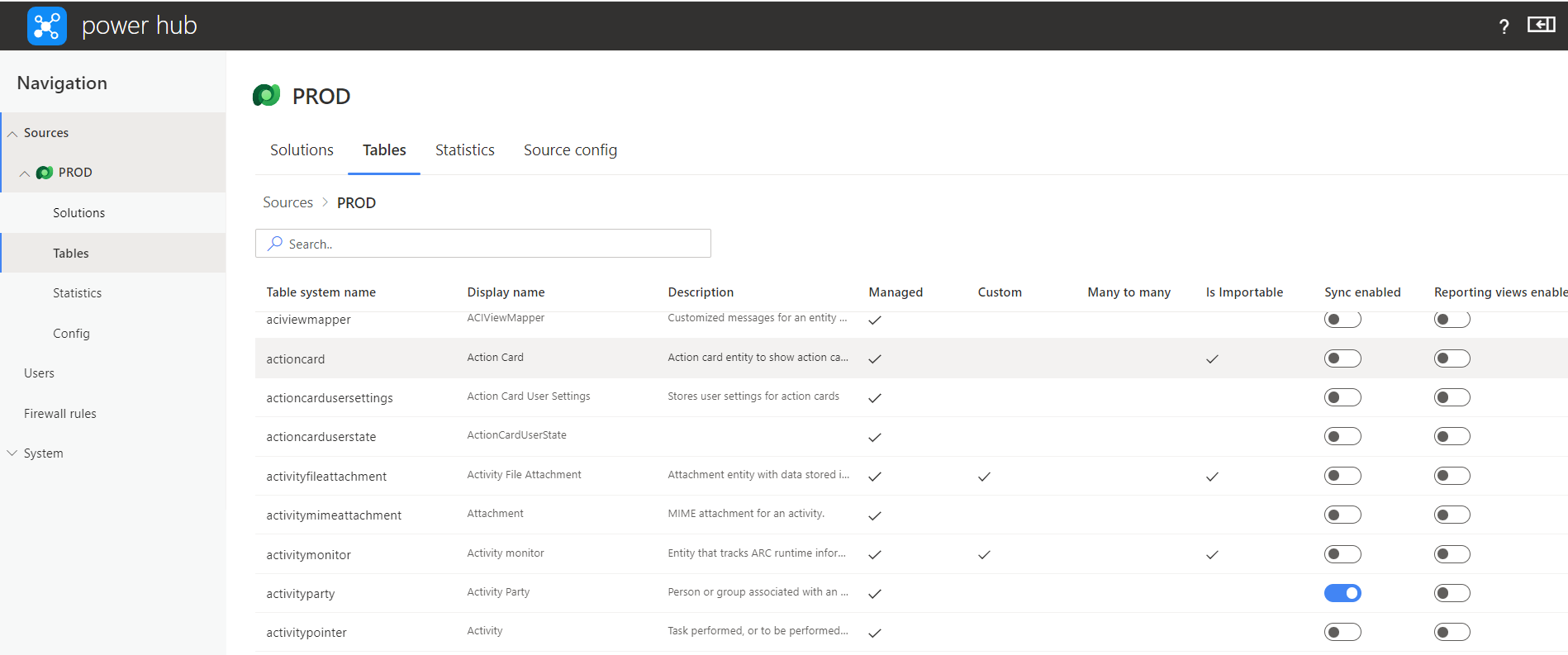Data Export Service - Replacement
An Alternative to the Microsoft Azure Synapse Solution
The end of Microsoft Data Export Service is there. November 2022 was the deadline for finding new solutions for your Data Export needs. So how do you know what your needs are?
We present two solutions: the Microsoft Azure Synapse Link and Projectum’s Power Hub. Each solution fits different organizations with different capabilities and data storage needs.
The Azure Synapse Link for Dataverse Synapse
The Microsoft Synapse Link for Dataverse Synapse is Microsoft’s solution to creating a single end-to-end way to work with data. It’s designed for large data capabilities, moving beyond data storage and into data analytics. It’s the perfect solution for companies with big data needs and in-house capabilities. You can find the Microsoft guide here.
However, there are some some condition which can make it challenging for you, when making the switch from DES to Synapse. These can include:
- Shared Capacity: While the Microsoft Synapse has a low-cost standard option, it does include shared capacity, which means the performance could fluctuate depending on the number of users at any given moment
- Cost: It can be expensive to scale the solution. The paid option offers better stability, but the pricing is a bit higher than you might be used to
- New platform and structure: The Synapse Link has a structure that is different from DES which can create a steep learning curve for those without existing capabilities
- Complex configuration: Initial configuration can be an intricate affair
- Difficult to integrate: the synapse isn’t set up to easily communicate with external services and products, such as SQL and other databases.
- Optimized for big data: companies with only standard data needs might experience delays due to the structure of splitting data into packages to be processed
How the Power Hub can solve your data needs
Power hub is the Projectum database solution that functions on the azure SQL database, structured similarly to the DES. It’s essentially your own database, giving you full control of your data, without sharing capabilities with anyone. It could be a solution to the data needs that were previously handled in DES.
Here are some features of the Power Hub solution that are similar to DES:
- Built on the Azure SQL database which is optimal for the most common workloads
- Similar structure to Microsoft Data Export Service which means you can recognize and reuse your existing structure and skillsets.
- Low latency so you can showcase near real-time data wherever you need it
- Simple configuration by using the Azure Resource Manager (ARM) to create your azure database, before configuring the connection to dataverse. The whole process takes no more than 1-2 hours.
- High availability of data. You can easily manage logins, user access, and firewall rules. This makes it easy to allow access to data.
- Low maintenance: the power hub features adaptive schema synchronization and automated database maintenance, such as reducing table and index fragmentation.
- Full control: everything is installed on your own Azure Tenant which means that you have full ownership and control of your data – independently of whether you have Power Hub or not
- Potential for scalability: because everything runs on your own tenant you can choose the speed and performance of your database, independently of the Power Hub features.

These features correspond to the DES. Furthermore, there are unique data-handling and analytic capabilities that you only get with Power Hub.
- Access to full data history, so you can create historical snapshots for any real-time analysis
- Secure from data loss: Power Hub makes it possible to retrieve lost data and can assist in the manual restoration of deleted records
- Predefined BI-report views which allow you to hit the ground running when it comes to reporting

So, what should you choose?
All in all, there are advantages to both solutions. What you choose depends on the needs and capabilities in your organization.
If you’re looking for big data capabilities, the Microsoft Synapse Azure link could be a good solution for you. However, if you’re looking for something closer to DES, we recommend Power Hub. While it’s not 1:1 it’s close to the DES which minimizes work in transition and delivers familiar features and full control of data. We’ve collected all your frequently asked questions here, where we delve further into the specifics and technical details.
Still unsure? Ask our Power Hub professional Andreas Cieslik, and you can always reach out to him for any questions about Power Hub or your data needs.
